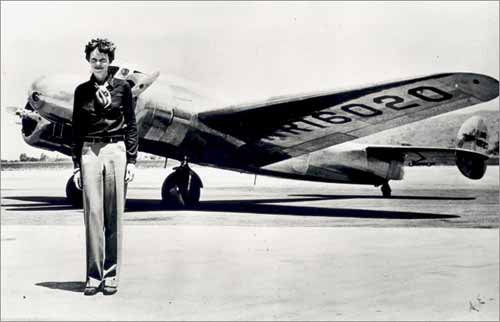2 July 1937: Amelia Earhart and Fred Noonan vanish over the Pacific
02 Jul 2008
Seventy one years to this day, celebrated aviator, Amelia Earhart, vanished into the central Pacific along with her navigator Fred Noonan. They were never heard from again. The unsolved disappearance remains a mystery to this day, and certainly one of aviation history's most abiding one.
In 1937, at 8:43 a.m. local time, the US Coast Guard cutter, Itasca, steaming off Howland Island, receives this faint transmission from Amelia Earhart: "KHAQQ calling Itasca. We must be on you but cannot see you -- but gas is running low…."

In the age of Charles Lindbergh and other celebrated fliers, Amelia Earhart became a household name in 1928, after becoming the first woman to fly across the Atlantic. Though the flight was made as a passenger, she made a solo flight across the Atlantic in 1932. She also became the first pilot, of either sex , to make a solo flight from Honolulu to the US mainland on 11 January 1935.
Over her flying career she made great efforts to promote aviation, both to women and to the public at large.
By 1937, saying she had one last good flight in her, she announced her decision to fly a specially modified Lockheed L-10E Electra around the world.
A first attempt failed, with the plane badly damaged. For the second attempt, Earhart teamed up with Noonan. They undertook an eastward journey and left Oakland, California on 21 May. From Miami, they flew south along the eastern seaboard of South America, and hopped across the Atlantic Narrows to Africa.
They skirted the southern coast of Asia, crossing the Indian subcontinent, Southeast Asia and Australia before arriving in Lae, New Guinea, 29 June. By now they had flown roughly 22,000 miles and still had another 7,000 to cover, all of it over the Pacific Ocean.
As they left Lae on 2 July, the cutter Itasca was already on station off Howland Island, which was Earhart's next destination. The cutter was deployed to help guide the plane in. Though ship-to-plane radio contact was established, but unexplained technical problems hampered communications. With Noonan unable to pick up Itasca's homing signals, the cutter even raised steam for a possible visual sighting. This attempt also failed as the aviators were unable to locate either the cutter or Howland Island.
Seventy-five minutes after receiving Earhart's last transmission, which included the line, "We are on the line 157/337," Itasca began searching for the plane. Earhart's pioneering stature compelled President Franklin Roosevelt to dispatch nine US Navy ships and 66 aircraft to help in what turned out to be a fruitless search.
Various clues did not amount to much and the mystery of their disappearance only deepened over the years. These included the conjecture that they may have been captured by the Japanese during WWII.
It is now felt that the likeliest explanation for their disappearance was the most logical one – that they ran out of fuel, ditched at sea and drowned.
Amelia Earhart and Fred Noonan were officially declared dead 5 January 1939.






























